


The chief characteristic of this class is a definite but chaotic arm structure, with most of the underlying disk covered by the Population I material whether in the regions of the wide diffuse arms or in the ``interarm'' region. The arms are not nearly as well separated as in ScI systems.
For the classifier, one puts galaxies into the ScII-III bin by asking ``is the galaxy as regular as ScII systems or as chaotic as ScIII''? The systems M33 (ScII-III) and NGC 2403 (ScIII) served as the archetypes. Our use of M33, the faintest of the six shown here, follows van den Bergh (1960a, c).
Five of the six galaxies here are similar. NGC 2276 is the brightest at MBT0, i = -22m.09. It has a more easily traced global pattern and better-defined filamentary segments to the arms than NGC 2427 or NGC 1058, for example; yet the entire face of the lens is covered with these fragments. They are not as organized as in ScI or even ScII systems - hence the classification ScII-III is based entirely on the degree of disorder of the arm system.
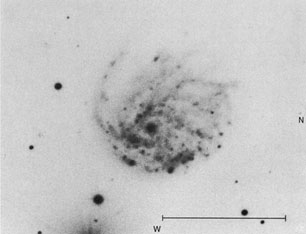
NGC 2276 P200-7566-S Sc(r)II-III -22m.09 2416 km/s | 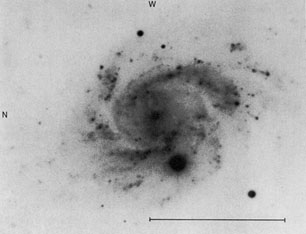
NGC 864 P200-81-H Sbc(r)II-III -21m.50 1561 km/s |
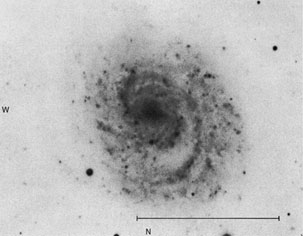
NGC 1637 P200-69-H SBc(s)II.3 -19m.72 717 km/s | 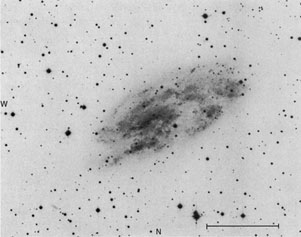
NGC 2427 C100-798-S Sc(s)II-III -19m.47 970 km/s |
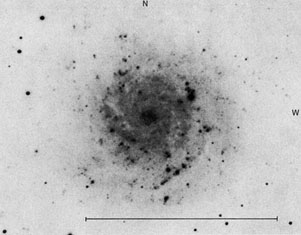
NGC 1058 P200-73-S Sc(s)II-III -19m.27 518 km/s | 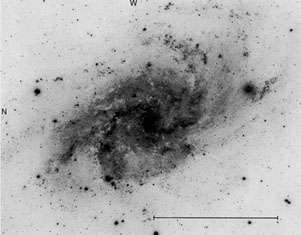
NGC 598 P48-243 Sc(s)II-III -19m.07L -180 km/s |